Range 7,820 km Weight 16,100 kg Engine type Turbofan | Wingspan 24 m Cruise speed 850 km/h | |
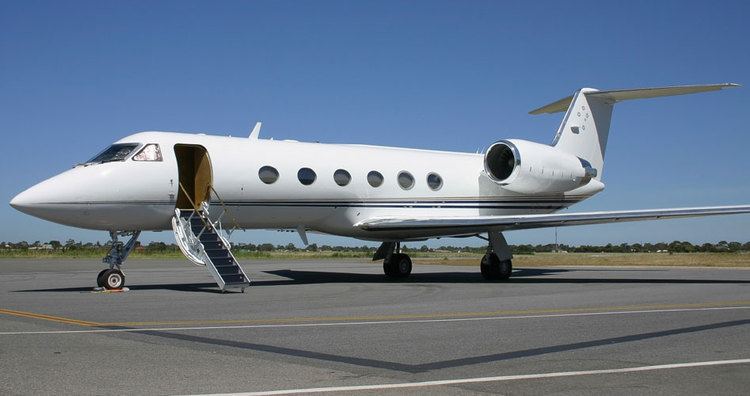 | ||
Unit cost 3,600,000–3,600,000 USD (1998) | ||
Gulfstream iv
The Gulfstream IV (or G-IV or GIV) and derivatives are a family of twinjet aircraft, mainly for private or business use. The aircraft was designed and built by Gulfstream Aerospace, a General Dynamics company based in Savannah, Georgia, United States from 1985 until 2003. Power is two Rolls-Royce RB.183 Tay turbofans. In October 2016, Gulfstream announced it will end production of the G450 and deliver the last in early 2018, as the G500 is starting to be delivered. 870 GIV/GIV-SP/G450 have been produced.
Contents
- Gulfstream iv
- Design and development
- Operational history
- C 20FGHJ military variants
- G350G450
- Civil operators
- Government and military operators
- Former military operators
- In popular culture
- References
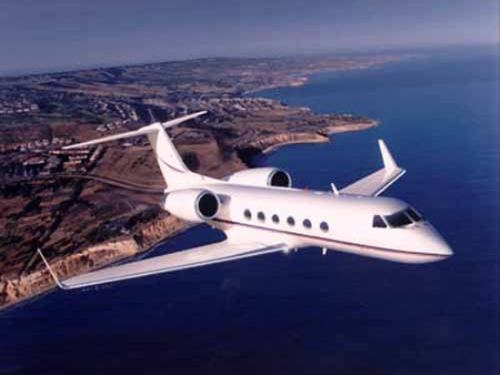
Design and development

Gulfstream, in collaboration with Grumman, began work on the Gulfstream IV in March 1983 as a re-engined, stretched fuselage derivative of the Gulfstream III. A decision to redesign the wing structure for weight reduction presented an opportunity for an aerodynamic redesign of the wing to reduce cruise drag and increase range. Wing contour modifications had to be restricted to the forward 65% of wing chord so that no redesign of the control surfaces would be necessary. Modification of the inboard wing would have entailed a redesign of the fuselage floor structure, consequently this region of the wing was not modified. Outboard wing modifications were aimed at reducing the peak subcritical pressure coefficient and moving it aft in an effort to reduce shock strength and increase shock sweep. The Gulfstream IV wing has a weaker, more swept outboard shock resulting in a lower cruise drag. Other benefits arising from this design are a lower root bending moment due to the more inboard center of pressure, a lower stall speed due to washout and a larger fuel volume due to increased chord. These aerodynamic improvements result in an increase in range of over 300 nautical miles.

In addition to the innovative wing design, the Gulfstream IV also became the first jet to have an entire glass cockpit. The first GIV made its maiden flight on September 19, 1985. The model received type certification from the FAA on April 22, 1987. The G-IV entered into service with serial number 1000 in 1987 and was upgraded to the special purpose GIV-SP version at serial number 1214 in 1993. It was later redesignated G400 at serial number 1500.
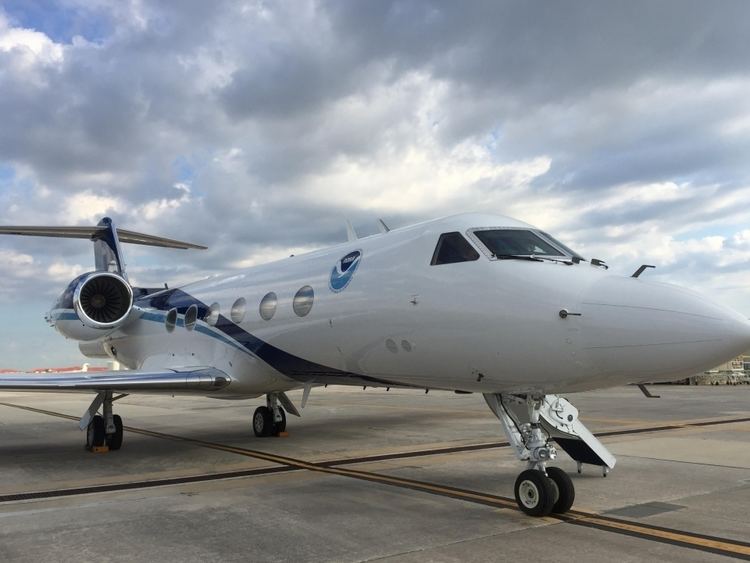
A shorter range variant was created based on the GIV and given the G300 designation in 2002. The G400 has a large cabin, long range of 4,350 nautical miles (8,060 km) and the same comfort and design that characterize the G series. Maximum cruise height and speed are 45,000 ft and Mach 0.88. Earlier models were fitted with Honeywell's SPZ 8000 Avionics package. The SPZ 8400 Avionics Package was an option, becoming standard on later models. Its second hand price was below $15 million in 2009.
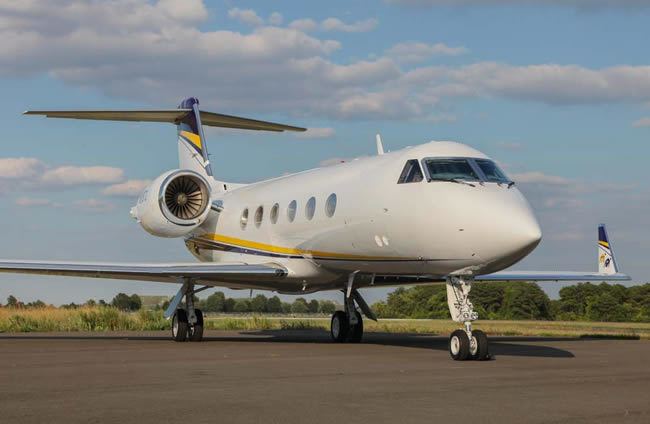
In 2001 Gulfstream began work on an improved version of the GIV-SP, originally designated GIV-X. It was later renamed G450. The G450 is lengthened 1 ft (0.305 m) over the G400 and shares the forward fuselage and larger cockpit of the G550. Production of the G450 began in October 2004, replacing the G400. The G450 has better performance and comes with the PlaneView cockpit with four 14 in (355 mm) liquid crystal displays and a Head up display (HUD). The shorter range G350 version of the G450 was developed and received certification in 2004.
Operational history
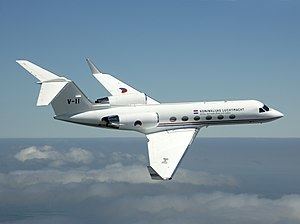
The National Oceanic and Atmospheric Administration (NOAA) operates a GIV-SP (N49RF) modified to fly scientists and crew members at 45,000 feet around tropical cyclones. The aircraft was modified to drop instruments called "dropsondes" to measure windspeed, barometric pressure, humidity, and temperature as they fall to the surface of the ocean. By sampling the cyclone with these dropsondes over a 4,000 mile track around the storm, the forecasters at NOAA's National Hurricane Center and Hurricane Research Division can better predict where the hurricane will be "steered" by the upper level winds. They also predict wind shear that will either increase or decrease a hurricane's strength. The GIV-SP is suited for this mission since it is fast, and can fly long distances with ample cabin space for the crew and instruments. In 2009, the NOAA GIV-SP was further modified by the addition of a side-scanning Doppler radar to the rear fuselage. This radar is used for storm cloud profiling.
In June 1987 a Gulfstream IV set 22 world records in its class in flying west around the world in 45 hr 25 min. The next year another GIV set 11 world records flying east around the world. In 1990, Gulfstream CEO Allen Paulson and a Gulfstream flight crew set 35 international records for around-the-world flight in a GIV.
C-20F/G/H/J military variants
The U.S. military variant of the IV, designated C-20F/G/H/J Gulfstream IV in Department of Defense service. The C-20F is a GIV model operated by the U.S. Army in a command/executive transport role.
The C-20G aircraft may be configured for cargo operations, 26 passenger operations or combinations of the two. With passengers seats removed, it may be configured as three pallets with no passengers or two pallets and eight passengers or one pallet and fourteen passengers. With full seating, the aircraft is capable of accommodating up to twenty-six passengers and a crew of four. A hydraulically operated cargo door is installed on the starboard side of the aircraft, and a ball roller cargo floor is capable of accommodating palletized cargo. The C-20G is operated by Fleet Logistics Support Squadron Four Eight (VR-48) at Naval Air Facility, Andrews Air Force Base, Washington, DC and at VMR Detachment Kaneohe Bay, Marine Corps Air Station Kaneohe Bay, Marine Corps Base Hawaii.
The C-20H is a GIV-SP model operated by the U.S. Air Force in a command/executive transport role. The C-20J is a GIV-SP model operated by the U.S. Army in a command/executive transport role.
The United States Department of Defense C-20A/B/C/D/E aircraft are all Gulfstream III variants.
G350/G450
The G450 is a designation for the model GIV-X, approved by the FAA on August 12, 2004, as is the G350, which has a reduced fuel capacity. Compared to the Gulfstream IV, its fuselage is 12 inch longer and the main entry door relocated aft. The Rolls-Royce Tay 611 engines are replaced by 611-8C with FADEC, redesigned thrust reverser, nacelle and pylon which increases range and payload, coupled with aerodynamic improvements. Many Gulfstream V-SP improvements are used: the Honeywell advanced flight deck display suite, electrical power generation, cabin temperature control and pressurization, nose and nose landing gear. It also has an improved APU and flap/stab actuation system, redesigned main landing gear wheels and brakes, flight control system hard-over protection system.
330+ aircraft were in service at the end of 2014, with prices ranging from $15 million to $32 million.
Civil operators
The aircraft is operated by private individuals, companies and executive charter operators, and in fractional ownership programs.
Government and military operators
Former military operators
In popular culture
The hip-hop artist Drake mentions the Gulfstream IV (G4) aircraft in the song Forever.
